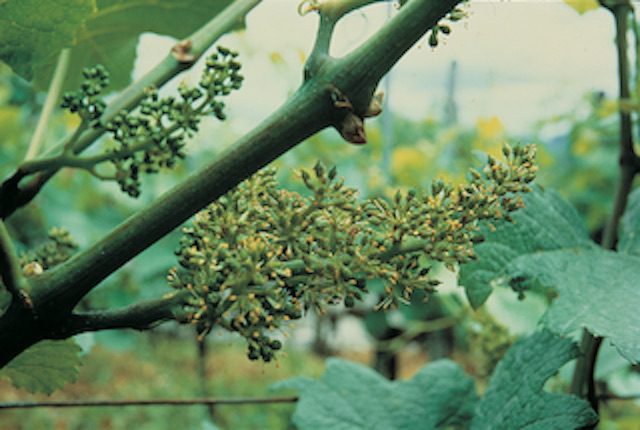
Sponsored
With all the challenges this season could throw up, botrytis is one that grapegrowers can help safeguard against with a preventative application of SWITCH from Syngenta.
An application of SWITCH during the flowering period at 80 percent capfall has been proven to deliver market-leading protection against latent infections, helping to reduce disease pressure at harvest.
“SWITCH contains two different active ingredients which have different modes of action against botrytis,” Syngenta senior technical services lead Scott Mathew said.
“It provides a high level of protection against botrytis due to these two active ingredients, with both systemic and protective activity against the disease.”
SWITCH to the benefits
- An ideal product to maximise yield and reduce the impact of latent botrytis infections;
- Rainfast within two hours, providing reliable disease control, even under wet conditions over flowering;
- A dust free water dispersible granule which means SWITCH is extremely user friendly, easy to mix and measure;
- Compatible with integrated pest management programs; and
- Results show that with SWITCH, there is no delay in grape ripening and no negative effect on alcoholic or malolactic fermentation.
Growth stage EL-25 (capfall) is the first real opportunity for latent botrytis infections to become established in grape berries.
It is the combination of actives, cyprodinil (GROUP 9) and fludioxonil (GROUP 12), which deliver broad protection, attacking botrytis at the four different stages of fungal development.
Cyprodinil is a systemic (xylem mobile) compound that is taken up into the cuticle and waxy layers of leaves and fruit. From there it is distributed and penetrates into other parts of the plant. Fludioxonil is the residual component of SWITCH which binds tightly to the waxy cuticle of the leaf and fruit surfaces.
What that means is that SWITCH prevents botrytis spore germination, it prevents germ tube growth from the Botrytis spore, and prevents it from colonising the leaf tissue.
A powerful disease resistance management tool
SWITCH contains two fungicides with different modes of action, which make it ideal for use in fungicide resistance management programs.
Other botrytis products contain only a single mode of action and therefore lack the additional protection from a different mode of action fungicide
The cyprodinil in SWITCH is a Group 9 fungicide that has systemic properties enabling it to enter the plant tissue and fight the fungus from inside. It prevents the fungus from entering the plant tissue, as well as disrupting any inter or intra cellular mycelial growth that may get into the plant.
Cyprodinil shows high levels of efficacy against botrytis and is considered higher risk for developing resistant botrytis populations. Resistance to Group 9 fungicides expresses itself as a sensitivity shift, similar to DMI Group 3 fungicide resistance. Other products that contain Group 9 chemistry include Scala (active ingredient – Pyrimethanil).
For built-in fungicide resistance management for SWITCH, Syngenta includes the Group 12 fungicide – fludioxonil. Fludioxonil is a formidable botrytis fungicide in its own right (and is registered as a solo botryticide in many countries around the world). It inhibits spore germination and growth of germ tubes and mycelia on the plant surface, interfering with the fungal cell’s ability to properly regulate osmotic pressure, causing the cell to burst from excessive intracellular pressure, and it blocks protein-kinase.
What makes this active ingredient such a great partner to cyprodinil is that it provides additional defence against the possible sensitivity shift to the Group 9 fungicides.
Timing
While ideal to use at 80 percent capfall SWITCH does offer flexibility due to its dual modes of action. SWITCH can be used during the early stages of bunch development (AWRI approval up to E-L 29, berries pepper-corn size (4 mm diameter). However, SWITCH should not be used within 60 days of harvest. This is the latest growth stage at which sprays can be expected to penetrate the developing bunches, reducing the impact of botrytis that may develop as the fruit ripens.
SWITCH is compatible with a wide range of products including RIDOMIL GOLD PLUS, TOPAS, THIOVIT JET and PROCLAIM and is best applied once or twice from flowering to veraison.
For more information visit the Syngenta website: www.syngenta.com.au
Futher reading













Recent Comments